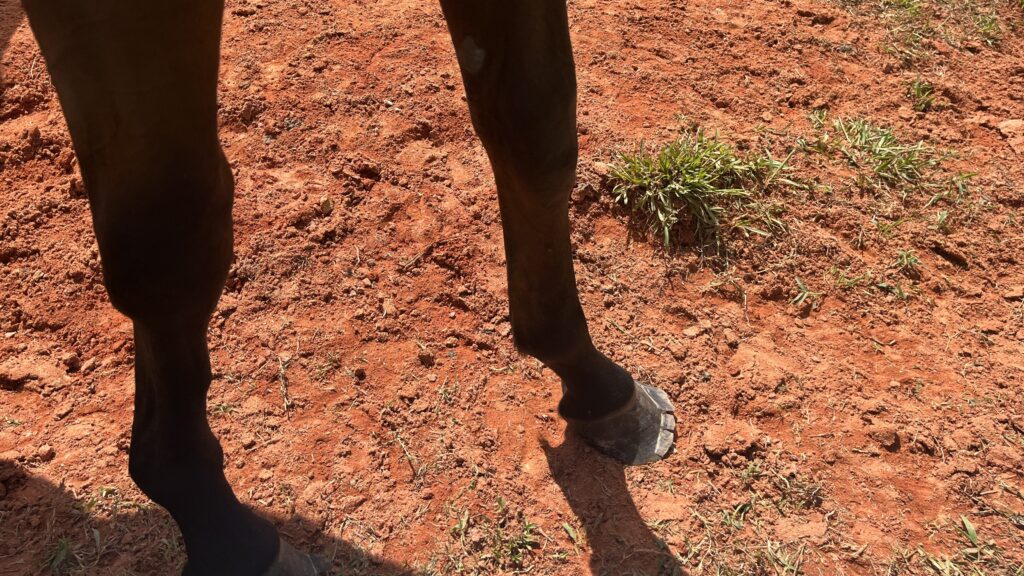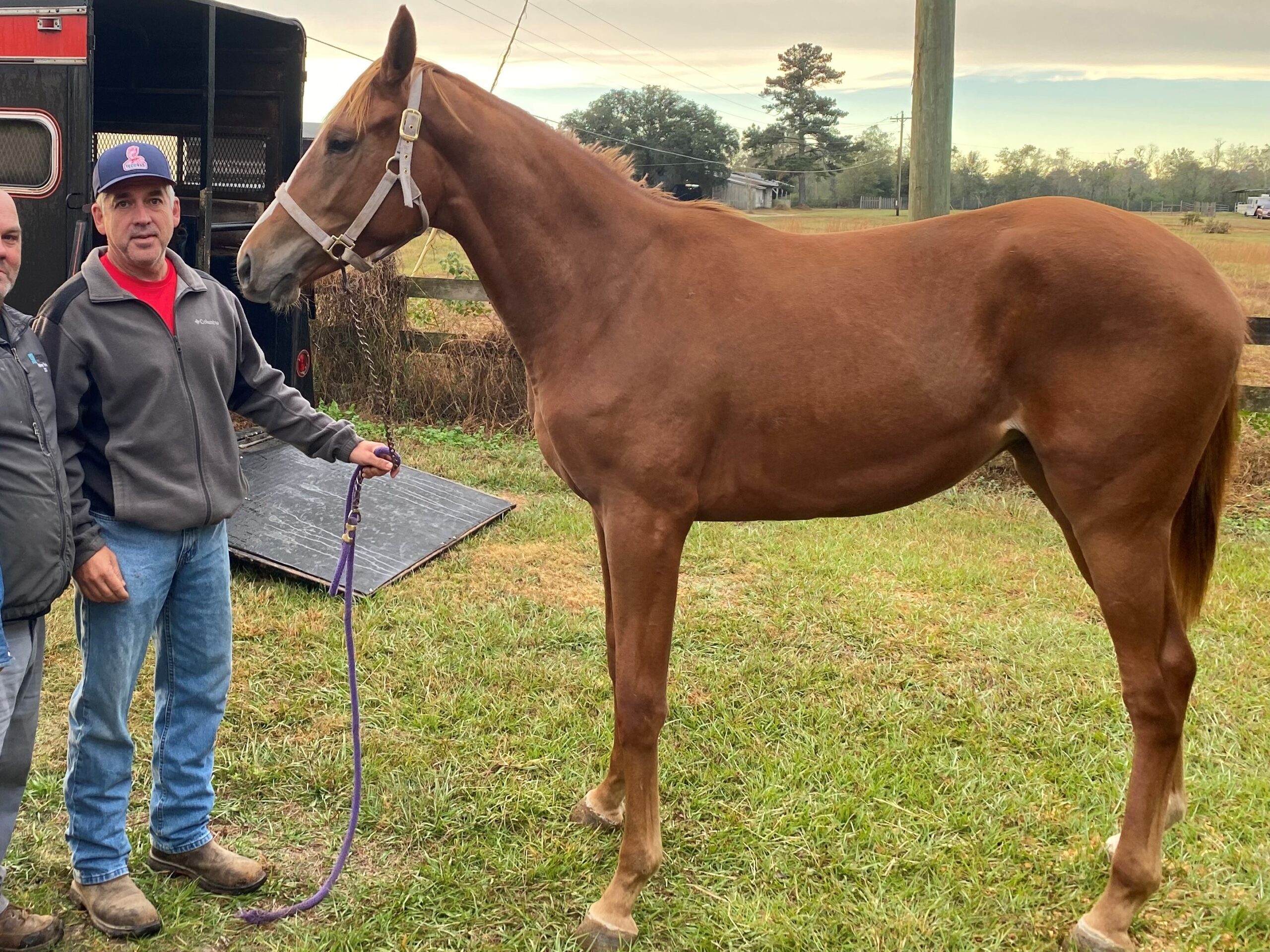Published on: December 2, 2024
Any links on this page that lead to products on Amazon are affiliate links and I earn a commission if you make a purchase. Thanks in advance – I really appreciate it!
When selecting a hoof supplement, it’s important to choose one that meets your horse’s unique needs. Having managed Thoroughbreds in training and Quarter Horses for performance events, I’ve learned how impactful the right supplement can be in transforming hoof health.
In this guide, I share key factors to consider, product reviews, personal experiences, and FAQs to help you make an informed choice.

Key Ingredients for Healthy Hooves
The most effective hoof supplements contain the following:
- Biotin: A minimum of 15–20 mg daily supports keratin production, strengthening the hoof wall.
- Methionine: An essential amino acid that enhances hoof elasticity and structural integrity.
- Zinc and Copper: These trace minerals promote tissue repair and help prevent cracks.
- Omega-3 Fatty Acids: Support overall hoof health by reducing inflammation.
For more details on the role of biotin and methionine, visit the Merck Veterinary Manual.

What to Consider When Choosing a Hoof Supplement
Quality Assurance
Choose supplements from reputable manufacturers that provide clear ingredient lists and meet quality standards. Certifications from organizations like the National Animal Supplement Council (NASC) ensure product reliability.
Palatability
A supplement won’t work if your horse refuses to eat it. I’ve had success with pellet forms, as they mix well with feed and are generally more palatable. One of my Thoroughbreds, who was notoriously picky, consistently ate Horse Guard Hoof & Coat without hesitation.

Cost and Value
When comparing supplements, evaluate the cost per dose to ensure value for money. Consider how long each product lasts and whether it includes all necessary nutrients.
Ease of Use
Hoof supplements come in powder, liquid, and pellet forms. I prefer pellets for their convenience and minimal waste.

Top Hoof Supplements: Reviews and Recommendations
This section contains affiliate links, which means I may earn a small commission at no extra cost to you if you make a purchase.
Here are detailed reviews of some top-rated hoof supplements:
1. Farrier’s Formula® Double Strength
- Key Ingredients: Biotin (20 mg), methionine, zinc, copper, iodine, and MSM.
- Benefits: Supports hoof growth, strength, and elasticity. Prevents cracks and brittleness.
- Pros: High biotin content and comprehensive ingredient profile.
- Cons: Higher price point compared to other products.
- Best For: Horses with severe hoof issues or slow growth.
- Learn More: Visit Farrier’s Formula®.
2. Horse Guard Hoof & Coat
- Key Ingredients: Biotin (10 mg), methionine, zinc, copper, and omega fatty acids.
- Benefits: Promotes hoof strength and coat shine.
- Pros: Affordable and palatable.
- Cons: Slightly lower biotin levels than other products.
- Best For: Horses needing both hoof and coat support.
- Learn More: Visit Horse Guard.
3. SmartHoof Ultra Pellets by SmartPak
- Key Ingredients: Biotin (25 mg), omega-3 fatty acids, and zinc.
- Benefits: Reduces inflammation and promotes healthy hoof growth.
- Pros: NASC-certified for quality.
- Cons: Only available via SmartPak.
- Best For: Owners looking for a premium product backed by science.
- Learn More: Visit SmartPak.

Comparing Hoof Supplements: Features and Prices
| Product | Key Ingredients | Benefits | Best For | Price |
|---|---|---|---|---|
| Farrier’s Formula® DS (11 lbs) | Biotin (20 mg), Methionine, Zinc, Copper | Improves hoof growth, prevents cracks | Horses with severe hoof issues | $139.99 (Amazon) |
| Horse Guard Hoof & Coat (10 lbs) | Biotin (10 mg), Methionine, Zinc, Omega-3s | Supports hoof strength and coat shine | Dual hoof and coat support | $73.53 (Amazon) |
| SmartHoof Ultra Pellets (7.6 lbs) | Biotin (25 mg), Omega-3s, Zinc | Reduces inflammation, promotes healthy growth | Premium product for overall hoof health | $79.96 (Amazon) |
My Personal Recommendations
Over the years, I’ve tested many hoof supplements, and here’s what stood out:
- Farrier’s Formula® Double Strength: One of my Thoroughbreds with recurring hoof cracks showed significant improvement in elasticity and strength within six months.
- Horse Guard Hoof & Coat: Ideal for a Quarter Horse in my care, who not only grew stronger hooves but also developed a shinier coat. When using supplments my horses hooves grow out fast and require more frequent trimming, keep this in mind.
FAQs About Hoof Supplements
If you still have questions about choosing or using hoof supplements, these FAQs provide quick answers to help you make the best decisions for your horse’s hoof health.
What are the most important nutrients in hoof supplements?
Horses need biotin, methionine, zinc, and copper to promote strong, healthy hooves. These nutrients enhance keratin production and prevent common hoof issues like cracks and brittleness.
How long does it take for hoof supplements to show results?
Most supplements take 6–12 months to produce visible changes, as hoof growth is a slow process. Consistency is key.
Are hoof supplements necessary for all horses?
Not all horses need hoof supplements. However, they are beneficial for horses with poor hoof quality, slow growth, or specific deficiencies. Consult your vet for tailored advice.
Can I combine hoof supplements with other feeds?
Yes, hoof supplements can be combined with regular feeds. Ensure there’s no overlap in nutrients to avoid over-supplementation.
How do I choose the best hoof supplement for my horse?
Consider your horse’s specific needs, ingredient quality, and palatability. Consult your vet for personalized recommendations.

How to Know If Your Horse Needs a Hoof Supplement
When it comes to hoof care, understanding the signs of hoof health—or lack thereof—can help you decide if a supplement is necessary. Here are some actionable tips to guide you:
Common Signs of Hoof Problems in Horses
- Cracks and Chips: Regular cracks, chips, or brittle hooves often indicate nutritional deficiencies, particularly in biotin or methionine.
- Slow Growth: Healthy hooves should grow approximately ¼ to ½ inch per month. If growth is noticeably slower, it might point to a lack of essential nutrients.
- Soft Hooves: Hooves that feel soft or spongy can signal a need for zinc, copper, or other structural support nutrients.
- Persistent Shoe Loss: Horses that frequently lose their shoes may benefit from supplements that strengthen the hoof wall.
- Flaky or Dry Hooves: Poor moisture retention and dryness may indicate an imbalance in the horse’s diet that supplements can address.
How to Maintain Your Horse’s Hoof Health
- Visual Inspection: Regularly examine the hooves for cracks, chips, flakiness, or signs of infection. Compare hoof conditions over time to monitor improvements or deterioration.
- Touch Test: Feel the hooves to check for unusual softness or sponginess, which might indicate weak hoof walls.
- Observe Movement: A horse with hoof issues may show signs of discomfort, reluctance to move, or an uneven gait.
- Consult with Professionals:
- Farrier: A farrier can provide insights into the overall quality of the hoof wall, growth rate, and shoeing challenges.
- Veterinarian: Seek a vet’s advice for persistent hoof issues or if you suspect an underlying metabolic condition, such as laminitis.
Proactive Hoof Care Tips
- Regular Trimming and Shoeing: Ensure your horse’s hooves are trimmed or shod at the correct intervals, typically every 6–8 weeks, depending on hoof growth.
- Balanced Diet: Provide high-quality forage and a balanced feed to supply foundational nutrients before introducing supplements.
- Maintain Moisture Balance: Use hoof conditioners or sealants as recommended by your farrier to retain moisture or repel excess water, depending on the climate.
By assessing your horse’s hoof health regularly and addressing specific needs with supplements or other care strategies, you can promote stronger, healthier hooves over the long term.
These practical tips will ensure your horse stays comfortable and performs at its best.

Potential Side Effects of Hoof Supplements
While hoof supplements are generally safe and effective when used correctly, some horses may experience mild digestive upset, such as loose stools or decreased appetite, particularly when a new supplement is introduced too quickly.
How to Reduce Risks When Introducing Supplements
- Gradual Introduction: Introduce new supplements slowly over several days, gradually increasing the dosage to allow your horse’s digestive system to adjust.
- Monitor for Reactions: Watch for changes in appetite, stool consistency, or behavior, especially during the first week of supplementation.
- Avoid Over-Supplementation: Feeding multiple supplements can lead to nutrient imbalances or even toxicity. As Kentucky Equine Research notes, over-supplementing certain minerals can actually cause hoof wall problems, underscoring the importance of careful monitoring.
Conclusion: Support Your Horse’s Hoof Health
Including the right hoof supplement in your horse’s diet can make a world of difference. By focusing on quality ingredients, palatability, and cost-effectiveness, you can give your horse the support they need for stronger, healthier hooves.
For more insights into hoof care, check out my article on Horse Hoof Care: Anatomy, Problems, and Maintenance Tips.
What hoof supplements have worked best for your horses? Share your thoughts in the comments below!

About the Author: Miles Henry
Lifelong Horseman | Racehorse Owner | Published Author
Miles Henry brings over 25 years of hands-on experience training and owning Thoroughbred racehorses. Raised with Quarter Horses and Appaloosas, he’s spent a lifetime learning from horses—on the track, in the barn, and in the field. Today, he runs a small but successful racing stable in Louisiana and shares real-world insights on HorseRacingSense.com, helping horse owners, fans, and bettors navigate the sport with confidence.
📚 Books: View Miles’s books on Amazon »
🎧 Podcast Guest: Animal Tales Ep. 32 |
YouTube Interview
📩 Newsletter: Sign up for racing tips and horse care advice »
🔗 Follow Miles:
Twitter |
Facebook |
YouTube




